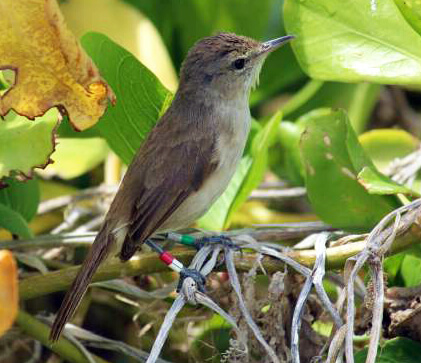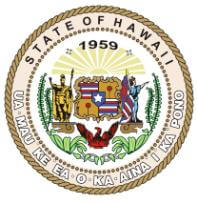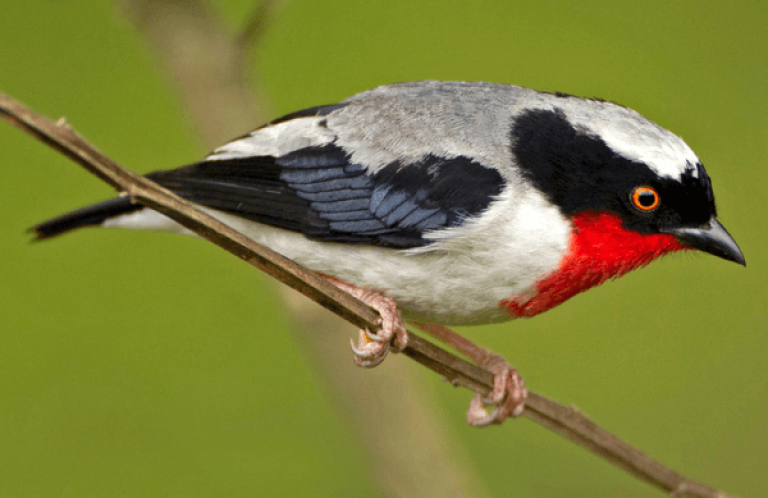Endangered Millerbird Population on Hawai'i's Laysan Island Doubles to More Than 100
 |
| Millerbird by Megan Dalton |
   | ||
(Washington, D.C., June 24, 2013) The latest count of endangered Millerbirds on Hawai'i's Laysan Island found that the bird's population has doubled – to over 100 – from the original total of 50 translocated birds released by the U.S. Fish and Wildlife Service (FWS), American Bird Conservancy (ABC), and others in 2011 and 2012.
The translocation program was initiated several years ago, when all of the world's remaining Millerbirds – between 400 and 600 at that time – were limited to the island of Nihoa in the remote Northwestern Hawaiian Islands. By moving some of the birds to a second island, Laysan, approximately 650 miles northwest of Nihoa, the Millerbird team hoped to reduce the high risk of extinction from catastrophes such as severe storms, droughts, fires, and accidental introduction of alien species such as rats, mosquitos, and/or diseases such as avian pox and malaria. Establishing a second population reduces this risk by increasing the population size and distribution. The translocation of the Nihoa Millerbird to Laysan also serves another purpose. It re-establishes the link in the ecosystem that was lost about 100 years ago when the closely related Laysan Millerbird went extinct.
In the highly successful first phase of the translocation effort, 24 Millerbirds were moved 650 miles from Nihoa to Laysan in September 2011. A second translocation of 26 birds took place in August 2012. Each release included a multi-day capture period on Nihoa followed by a three-day voyage to Laysan, and was carried out by a team of biologists from FWS, ABC, and other organizations.
The translocated birds produced 29 young during their first breeding season in 2012. The second breeding season is currently underway, and the 73 adults on Laysan have produced at least 29 offspring in 2013, with many more nests still active.
Each bird carries a unique combination of colored leg bands to allow individual identification in the field. Approximately half of the birds released each year were also fitted with temporary radio transmitters so that their locations could be determined during their first three weeks in their new home. Biologists have been on site most of the time to monitor the birds' movements and behaviors, including nesting attempts.
Close observation of the translocated Millerbirds has yielded significant new scientific information about the species, such as details of breeding chronology and a still-emerging picture of how young birds mature and enter the breeding population. All of this information is important in assessing the progress toward population establishment on Laysan and is valuable in the overall conservation and management of the species. The overwhelming success to date indicates that Laysan has suitable habitat and food resources to support the resourceful and adaptable Millerbirds.
The Laysan Millerbird, along with the Laysan Rail and Laysan Honeycreeper, went extinct in the early 20th century when Laysan Island was denuded by non-native rabbits. Thus the Millerbirds remaining on Nihoa – a rugged 155 acre volcanic island – became the only Millerbirds left on Earth.
The Millerbird, which weighs less than an ounce, is a lively brown songbird that forages for insects among low shrubs and bunch-grasses. On Laysan, the Millerbird joins other endangered species, such as the Laysan Finch, Laysan Duck, Hawaiian monk seal, and several plant species. It also co-exists on Laysan with millions of nesting seabirds.
At 1,023 acres, Laysan is the second-largest of the islands and atolls within Hawaiian Islands National Wildlife Refuge located in the Papahanaumokuakea Marine National Monument, approximately 790 miles northwest of Honolulu.
As a co-manager of the Papahanaumokuakea Marine National Monument and World Heritage Site, the FWS is proud to lead this project in collaboration with American Bird Conservancy. We are grateful for the support and assistance from the National Fish and Wildlife Foundation, the University of New Brunswick, University of Hawai‘i, the U.S. Geological Survey National Wildlife Health Research Center, and the Office of Hawaiian Affairs.
To learn more about the Millerbird project and read updates from Laysan, visit fws.gov/pacificislands and ABC.
Note: Project images can be downloaded here.


















































